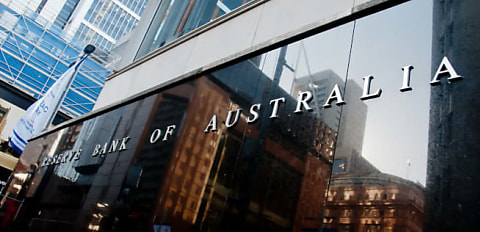The Reserve Bank of Australia (RBA) has released the minutes of the board’s monetary policy meeting from 6 June, revealing that members discussed holding the cash rate and increasing it, recognising “the strength of both sets of arguments”.
Ahead of the June board meeting, many economists had expected that the central bank would hold the official cash rate at 3.85 per cent, with the RBA’s ultimate decision to increase the cash rate by 25 bps to 4.1 per cent catching many out for the second month in a row.
However, while the RBA discussed both a hold and a rise, it ultimately decided that a further increase in interest rates was warranted given that recent data had suggested that inflation risks had shifted “somewhat to the upside”.
Given this shift and the already drawn-out return of inflation to target, the RBA board moved to hike the cash rate to 4.10 per cent, in a bid to prevent inflation from becoming more persistent and to avoid the risk of a sharp rise in unemployment.
However, the board still thinks inflation is well above target and is only forecast to return to the top of the target range by mid-2025.
What swayed the arguments for and against a hike?
According to the minutes, the case for leaving the cash rate unchanged rested on the slowing in the economy and the possibility that the existing run of interest rate hikes would lead to the economy slowing more sharply than expected.
Members did note that consumption growth was already quite weak, especially in per capita terms, and that real disposable incomes were falling (especially for home loan borrowers) and many renters were experiencing difficult financial conditions, resulting in pressures on household purchasing power.
Delays in the transmission of previous cash rate hikes through the economy, the scale of the increase in the cash rate over the preceding year, and the large number of fixed-rate loans scheduled to expire over coming months would also see financial conditions tighten further, they noted.
Given these developments, the board members flagged that there was a risk of the economy slowing and unemployment rising by more than expected.
As such, the minutes revealed that members had discussed the possibility of holding the cash rate unchanged at this meeting and then “reconsidering at subsequent meetings, with the benefit of additional data”.
However, members ultimately concluded that risks on inflation had shifted to the upside compared with a month earlier.
It reached this conclusion after reviewing the ‘surprise’ figures in the monthly inflation indicator for April (which suggested inflation has risen to 6.8 per cent over the 12-month period).
Board members noted that services price inflation had not yet shown signs of moderating (and that “evidence from abroad suggested that it may prove to be persistent”) as well the fact that wages growth was still consistent with the inflation target despite “disappointing” productivity growth (which have been stagnant for the past three years).
The RBA board also discussed the recent resumption of growth in house prices, which it said was being stoked by high demand following strong population growth and expectations that the interest rate cycle may be near its peak.
The central bankers flagged that house price growth could “imply less drag on consumer spending in the coming year than had been envisaged”, particularly if the upturn is of long duration.
Members noted that the stabilisation in housing loan approvals suggested that financial conditions “may not have been as tight as they had previously judged”.
Members concluded that these developments had shifted the balance of risks on inflation to the upside compared with a month earlier.
The minutes therefore showed that while members “recognised the strength of both sets of arguments” (for and against a hike) and that the arguments were finely balanced, they ultimately judged that the case to raise the cash rate at this meeting “was the stronger one”.
“The board affirmed that its priority is to return inflation to target within a reasonable time frame. The recent data suggested that inflation risks had shifted somewhat to the upside,” the minutes read.
“Given this shift and the already drawn-out return of inflation to target, the board judged that a further increase in interest rates was warranted. This increase would provide greater confidence that inflation would return to target over the period ahead.”
In taking the decision to increase interest rates again, members acknowledged the impact on mortgage rates, with scheduled mortgage payments already increasing as well as the “considerable uncertainty regarding the outlook for household spending and the financial stresses facing some households”.
It therefore agreed to continue to monitor trends in household spending closely and consider the implications for the inflation outlook as well as developments in the global economy and the domestic labour market.
[Related: RBA monitoring arrears on the path to lower inflation]
